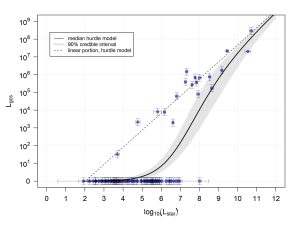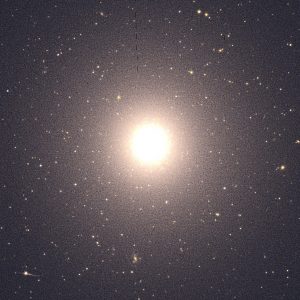Sam is a second-year PhD student in the David A. Department of Astronomy and Astrophysics at the University of Toronto. She works in the field of astrostatistics, applying statistical models and methods to better understand the relationship between galaxies and their star cluster populations.
Before starting her PhD at U of T, Sam graduated with honours from Yale University, where she completed majors in both astrophysics and anthropology. In her free time, she enjoys cooking,
baking, exploring Toronto, and reading in her local park or coffeeshop.
How did you first become interested in Astronomy and Astrophysics?
As a kid, my dad had an old telescope that we would take outside to look at the moon and planets. I was always amazed by how what looked like little dots of light would suddenly become big spheres with visible colours, rings, and craters when looking through the telescope. As I got older, science was always my favourite subject in school, and astronomy felt like an
especially fun puzzle of trying to figure out the universe. Whereas in other science classes we would devise experiments to test our hypotheses, in astronomy we have only the light that reaches our telescopes to figure out the workings of the universe. To me, this is a fun challenge!
Can you tell us a little bit about your specific field of research?
What’s the most exciting thing about your research?
This is an incredibly exciting time to be studying globular clusters! These star clusters are relatively faint, and so until now we have only been able to observe them in nearby galaxies. This means that to understand their formation and evolution, which happened in the early universe, we have had to rely on simulations and models in tandem with data from the modern universe. The James Webb Space Telescope, however, has the ability to see clusters at higher redshifts, which will for the first time give us an observational view of globular clusters as they
existed in the past!
What do you hope will be your next step, professionally?
As a second year PhD student, I’m currently focused on continuing to dive into my thesis
projects and explore new avenues of research that I’m sure will pop up along the way. I’m also
interested in science communication and outreach, and hope to get more involved in both of
these during the remainder of my thesis. Long term, I’m not sure exactly what I want to do, but I
would love to be able to show kids how cool our universe is and inspire them to maintain an
interest in science!

Presenting research from an undergraduate project at the 2020 winter meeting of the American Astronomical Society. Credit: Sam Berek.

This plot shows the luminosities of all the galaxies in the Local Group (the group of galaxies the Milky Way lives in) and the luminosities of their globular cluster systems. Credit: Sam Berek.

NGC 1407, a giant elliptical galaxy. Each of the bright dots scattered around the galaxy is a globular cluster. Credit: Hubble Space telescope data, constructed by William Harris.
_________________________________________________________________________________________


